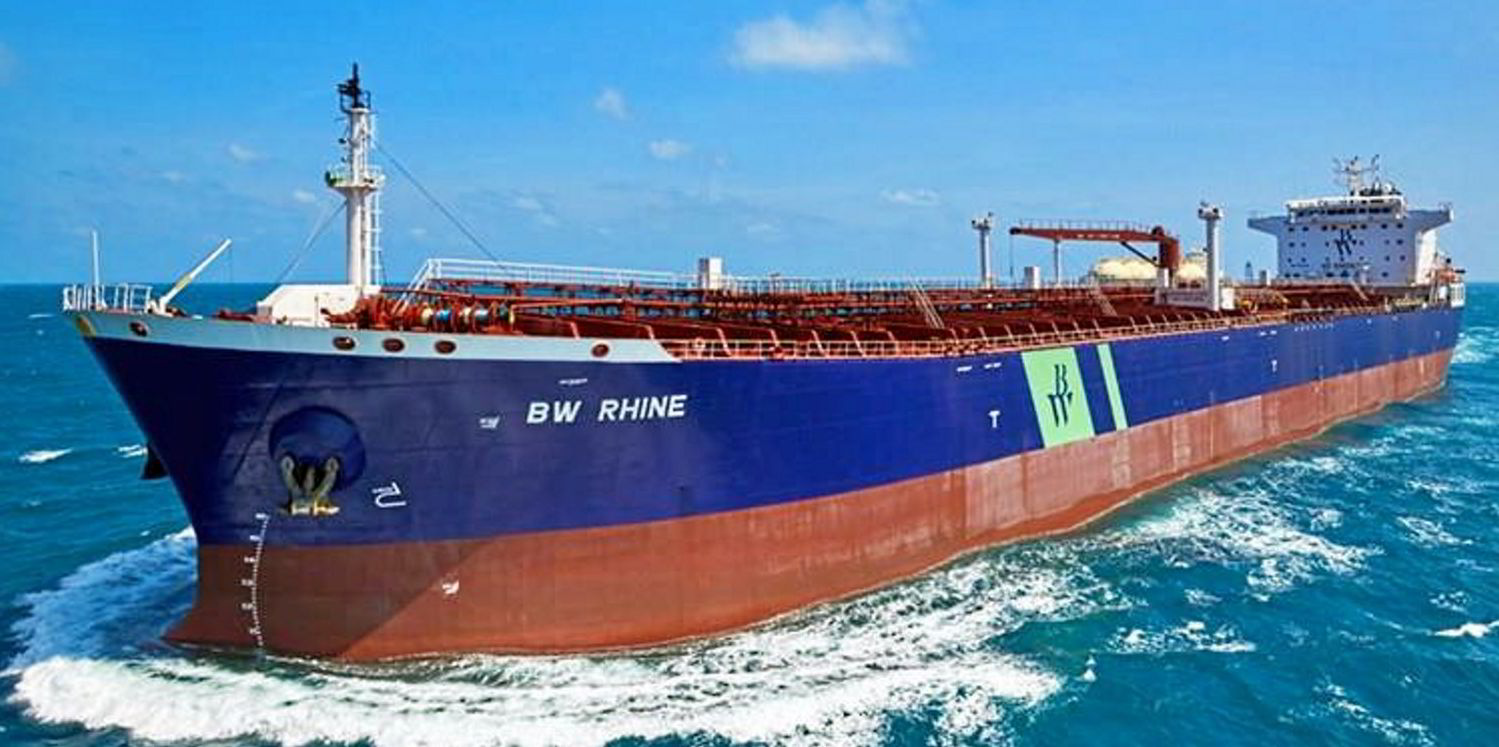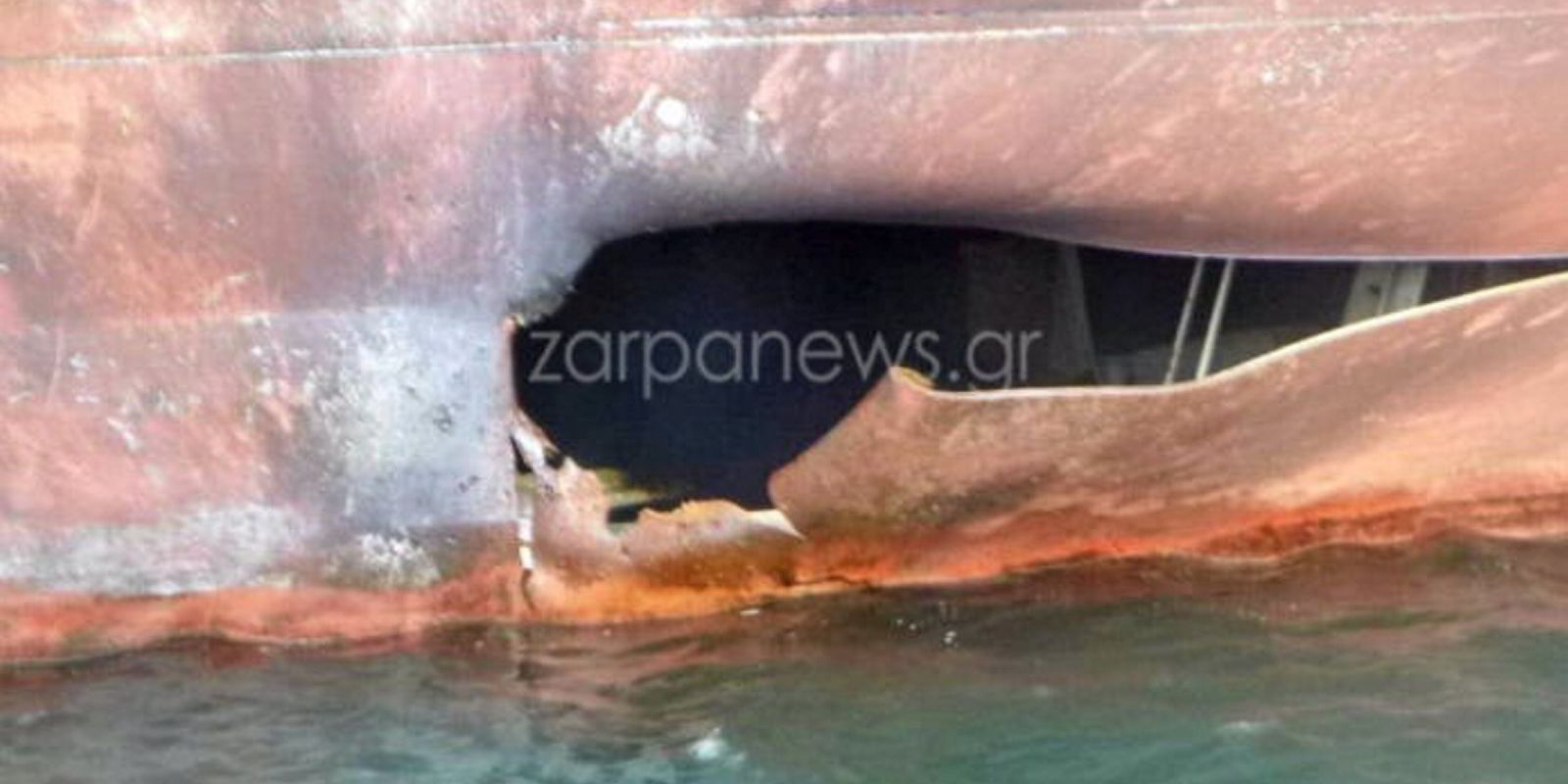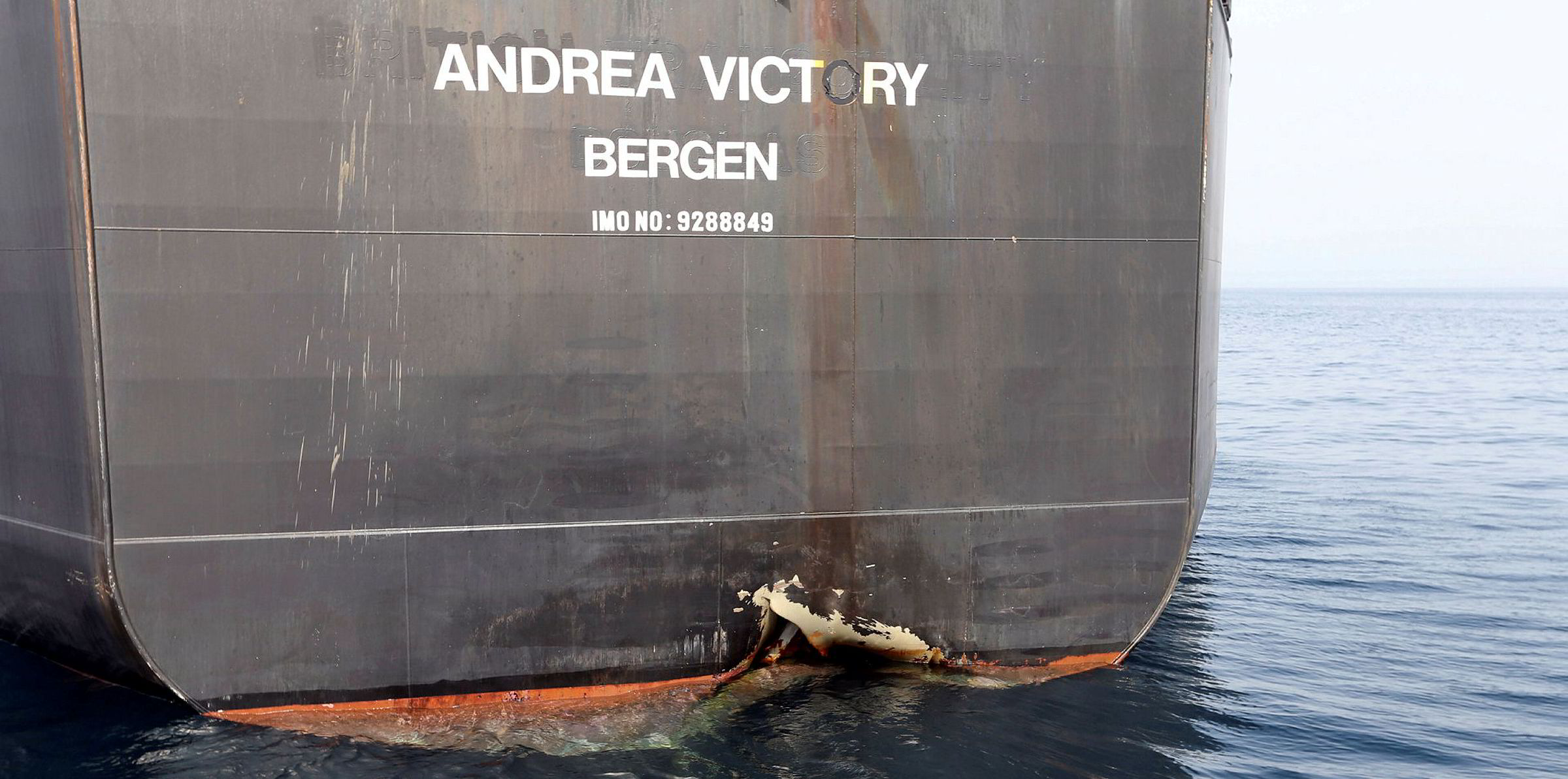Hafnia has confirmed that one of its LR1 product tankers has suffered an explosion and fire at the Saudi Red Sea port of Jeddah.
The Singapore shipowner said the 76,600-dwt BW Rhine (built 2008) was hit from an “external source” while discharging early on Monday morning.
The master immediately ceased all discharge operations and enacted emergency procedures on board.
“The crew have extinguished the fire with assistance from the shore fire brigade and tug boats, and all 22 seafarers have been accounted for with no injuries,” Hafnia said.
It said hull damage occurred at water ballast tank five and cargo tank four on the port side.
“It is possible that some oil has escaped from the vessel, but this has not been confirmed and instrumentation currently indicates that oil levels on board are at the same level as before the incident,” the company said.
“Cooling procedures and inerting of cargo spaces has been initiated to avoid a reignition of the fire. Ship stability is being assessed before proceeding with any further operations.”
Hafnia said it has activated its shore-based emergency response team and that all relevant authorities have been advised of the incident.
Second incident?
The port of Jeddah was subsequently closed by the authorities.
On Monday morning, the United Kingdom Maritime Trade Operations (UKMTO) reporting body issued an update to its warning notice relaying "unconfirmed reports of a second vessel being involved in an incident".
Investigations were ongoing.
Security consultancy Ambrey said BW Rhine had last called at King Fahad port in Yanbu, Saudi Arabia.
"There was no immediate confirmation on the cause of the explosion," the company added. "Ambrey assess the attack was likely related to the conflict in Yemen."
Analytics company Kpler said the vessel was carrying gasoline from the Samref refinery to storage in Jeddah.
The tanker had been chartered by Aramco Trading Company, Kpler added.
Waterborne improvised explosive device
The Hafnia blast was the third incident in little more than two months in which a tanker has suffered an explosion in the region.
Al Shuqaiq terminal in southern Saudi Arabia, near the Yemeni border, was the scene of an explosion on board the George Economou-controlled 107,000-dwt tanker Agrari (built 2009) on 23 November.
An investigation into the incident involving the Malta-flag TMS Tankers vessel is still underway.
UK security consultancy Dryad Global said reports suggested that the vessel was struck by a waterborne improvised explosive device (IED) launched by Houthi rebels who are fighting the Saudi-backed Yemeni government.
“Attempts at targeting vessels and ports via such methods are reported with relative frequency with previous reporting indicating that Saudi forces interdicted and destroyed an attempted waterborne IED targeting the Saudi port of Jizan on the 13 November,” Dryad said.
Additional incidents have involved vessels being struck by drifting mines, and Saudi naval forces reportedly destroyed Houthi and Iranian mines in November.
A similar incident took place on 3 October, when the Eastern Mediterranean Maritime-managed 105,300-dwt aframax Syra (built 2010) was hit by submersible explosive device while at Rudhum, Yemen.
Dryad said incidents in the Red Sea remain uncommon and have typically involved the targeting of Saudi-flag vessels in transit by Houthi rebels in the vicinity of the Hanish islands in the southern Red Sea.
It added that although details surrounding the BW Rhine incident remain unclear, the presence of Houthi rebels offshore and some 560 km north of their usual area of operations would represent a “fundamental shift in both targeting capabilities and intent”.
“If the incident is determined to be the result of malicious intent, it remains unlikely that such an incident was perpetuated by Houthi rebels targeting vessels off Jeddah with a methodology similar to that seen offshore Al Shuqaiq and Jizan,” Dryad said.
“If indeed the vessel has been targeted by an explosive device it remains a realistic possibility that the vessel was targeted via the presence of limpet mines, similar to that seen deployed by Iranian forces within the Gulf of Oman in 2019.”






